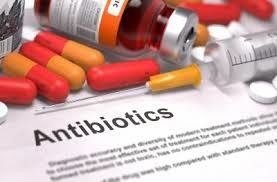
W.H.O. Warns That Pipeline for New Antibiotics Is Running Dry WHO、新抗生物質パイプラインが枯渇(無い)と警告
In two new reports, the global health agency says only government intervention can fix the broken market for new antimicrobial drugs. 2つの新しいレポートで、WHOは、政府介入のみが新しい抗菌薬の壊れた市場を修正できると述べています。

By Andrew Jacobs
Published Jan. 17, 2020
Updated Jan. 18, 2020
With the pipeline for new antibiotics slowing to a trickle and bankruptcies driving pharmaceutical companies from the field, the World Health Organization on Friday issued a fresh warning about the global threat of drug resistant infections.
Some 700,000 people die each year because medicines that once cured their conditions are no long effective. Yet the vast majority of the 60 new antimicrobial products in development worldwide are variations on existing therapies, and only a handful target the most dangerous drug-resistant infections, the agency said in a report.
“We urgently need research and development,” said Sarah Paulin, technical officer of Antimicrobial Resistance and Innovation at the W.H.O. and an author of two reports on the subject issued Friday. “We still have a window of opportunity but we need to ensure there is investment now so we don’t run out of options for future generations.”
Without government intervention, the United Nations estimates that resistant infections could kill 10 million people annually by 2050 and prompt an economic slowdown to rival the global financial crisis of 2008.
[Read our series on drug resistance, Deadly Germs, Lost Cures.]
In the two reports — one that analyzed products being tested on patients and another that looked at therapies in the early stages of development — the W.H.O. cited the grim economic realities that have been shutting down investment in the field by major pharmaceutical companies and strangling the few remaining small companies that have come to dominate development of antimicrobial therapies.
新しい抗生物質のパイプラインが製薬会社を現場から追い出し、倒産と破産を加速させているため、金曜日に世界保健機関WHOは、薬剤:耐性菌:感染の世界的脅威について、新たな警告を発しました。
かつての状態を治癒した薬は、もはや効果がないため、毎年約70万人が死んでいる。しかし、世界中で開発されている60タイプの新抗菌製品の大部分は、既存の治療法のバリエーション(既存の同成分)であり、最も危険な薬剤耐性菌感染を標的とするものは、一握りである、とWHO報告書で述べた。
W.H.O.の抗菌薬耐性とイノベーションのテクニカルオフィサー、Dr サラポーリンは次のように述べています。金曜日に発行された主題に関する2つのレポートの著者。 「私たちにはまだ機会のウインドーがありますが、将来世代のために選択肢を使い果たすことがないよう、今は投資時期であることを確認する必要があります。」
政府介入がなければ、国連は、耐性感染症が2050年まで、年間1000万人を殺し、2008年の世界的な金融危機に対抗するために経済減速を引き起こす可能性があると推定しています。
[薬剤耐性に関するシリーズ、Deadly Germs、Lost Curesをお読みください。]
2つのレポートでは、1つは患者でテストされている製品を分析し、もう1つは開発の初期段階で治療法を検討しました-WHOと大手製薬会社による、この分野への投資を停止し、抗菌薬トリート開発を支配するべきの、残りの「中小企業」を絞殺(コウサツ)する、厳しい経済的現実を引用しました。
Unlike drugs that treat chronic conditions and are taken for years, antibiotics save lives, but are taken for just a week or two, diminishing their profitability for drugmakers.
The sense of crisis has mounted in recent months as a number of American drug companies with promising new products have gone belly up. Among them are Melinta Therapeutics, which declared bankruptcy three weeks ago after failing to turn a profit on the four antibiotics it has on the market. Two other antibiotic start-ups, Achaogen and Aradigm, also went out of business last year.
Drug company executives, public health experts and advocates for patients — groups often at odds with one another — have been united in urging Washington to enact new policies and programs that would help shore up the finances of ailing antibiotic companies and lure pharmaceutical giants back to the field.
“Without such incentives, I’m worried these innovative companies developing new medicines will struggle to obtain the resources they need to fully develop them and bring these breakthroughs to patients,” said Greg Frank, director of Working to Fight AMR, an advocacy group funded by the pharmaceutical industry.
The outlook isn’t entirely grim. In its report on potential innovative therapies, the W.H.O. identified 252 agents in development that target 12 pathogens the health agency has declared grave threats to humanity. They include multidrug-resistant E. coli, salmonella and the bacteria that cause gonorrhea.
Nearly 80 percent of these products are being developed by drug companies, the vast majority of them in Europe and North America, and they include a number of novel therapies like phages and antimicrobial peptides that offer the possibility of treating infections without a reliance on traditional antibiotics.
“It is very encouraging to see a wide variety of new innovative approaches in the preclinical pipeline,” the study said. “Nonetheless, many scientific challenges are yet to be overcome.”
慢性疾患を治療し、長年服用している薬物とは異なり、抗生物質は命を救いますが、わずか1、2週間しか服用しないため、製薬会社の収益性が低下します。
有望な新製品を持つ「アメリカ製薬会社」の数が激減したため、ここ数ヶ月で危機感が高まっています。その中には「Melinta Therapeutics」(会社名)があります。これは3週間前に市場に出ている4つの抗生物質で利益を上げられなかった後に、破産を宣言しました。他の2つの新興企業、「Achaogen」と「Aradigm」も昨年、廃業しました。
製薬会社の幹部、公衆衛生の専門家、患者の擁護者(しばしば対立するグループ)が団結して、蝕んでいる、抗生物質企業の財政を支え、製薬会社を誘致するのに役立つ、「新しい政策」と「プログラム」を制定するよう「ワシントン」に促しています。
「このようなインセンティブがなければ、新薬開発している革新的な企業が、完全開発し、患者にブレークスルーをもたらすには必要なリソースを獲得するのを?心配している」と主張した。 製薬産業によって。
見通しは完全に厳しいわけではありません。 WHOは、潜在的な革新的療法に関する報告書で、健康機関が人類に対する重大な脅威を宣言した12病原体を標的とする開発中の「252」エージェントを特定するには、多剤耐性大腸菌、サルモネラ、ノロウイルスを引き起こす細菌が含まれます。
これらの製品のほぼ80%は製薬会社によって開発されており、その大部分はヨーロッパとユーロアメリカにあり、従来の抗生物質に依存せずに感染を治療する可能性を提供する「ファージ」や「抗菌ペプチド」など、多くの新しい治療法が含まれています。
「前、臨床パイプラインで多種多様な新しい革新的なアプローチを見ることは非常に勇気づけられます」と研究は述べています。 「それにもかかわらず、多くの科学的課題はまだ克服されていません。」
The report on drugs in the later stages of development was less sanguine. Only eight new antibiotics have been approved since 2017, it said, and most are derivatives of existing drugs. The majority of them do not treat pathogens on the W.H.O.’s list of urgent threats.
Of the 50 new antibiotics being tested in clinical trials, only two are active against the most worrisome class of bugs, called gram negative bacteria, that can prove deadly for newborns, cancer patients and those undergoing elective procedures like hip and knee replacements.
It can take ten years and cost more than $2 billion to develop a new antibiotic and bring it to market, and much of that expense is for the failures along the way. Congress has been considering a bill that would shore up the market for antibiotics but it has yet to advance, despite bipartisan support.
In the meantime, many experts worry that the few remaining start-ups in the field may not survive.
“We can’t have more companies going bankrupt,” said Dr. Helen Boucher, an infectious disease specialist at Tufts Medical Center and a member of the Presidential Advisory Council on Combating Antibiotic-Resistant Bacteria. “If the pipeline remains this anemic, that’s going to have real implications for our patients.”
開発後期段階の薬物に関する報告は、楽観的ではなかった。 2017年以降に承認されたのは8種類の新しい抗生物質のみであり、ほとんどが既存の薬物の派生物(同じ記号による成分式)であると述べた。それらの大半は、WHOの緊急/脅威リストにある病原体を取り扱っていません。
臨床試験でテストされた50の新しい抗生物質のうち、グラム陰性菌と呼ばれる最も気になるクラスのバグに対して有効なのは2つだけです。
新抗生物質を開発して、市場に投入するには、10年かかり、20億ドル以上の費用がかかる可能性があります。その費用の大部分は、途中での失敗に対するものです。議会は、抗生物質の市場を支える法案を検討してきましたが、超党派の支持にもかかわらず、まだ進歩していません。
その間、多くの専門家は、フィールドに残っている少数の新興企業が生き残れないかもしれないと心配しています。
「これ以上会社を倒産させることはできません」とタフツ医療センターの感染症専門家であり、抗生物質耐性菌との戦いに関する大統領諮問委員会のメンバーであるDr ヘレン・ブーチャーは語った。 「パイプラインがこの貧血のままである場合、 それは患者に「真の意味」 (患者は決して助からない意) を持ちます。」
